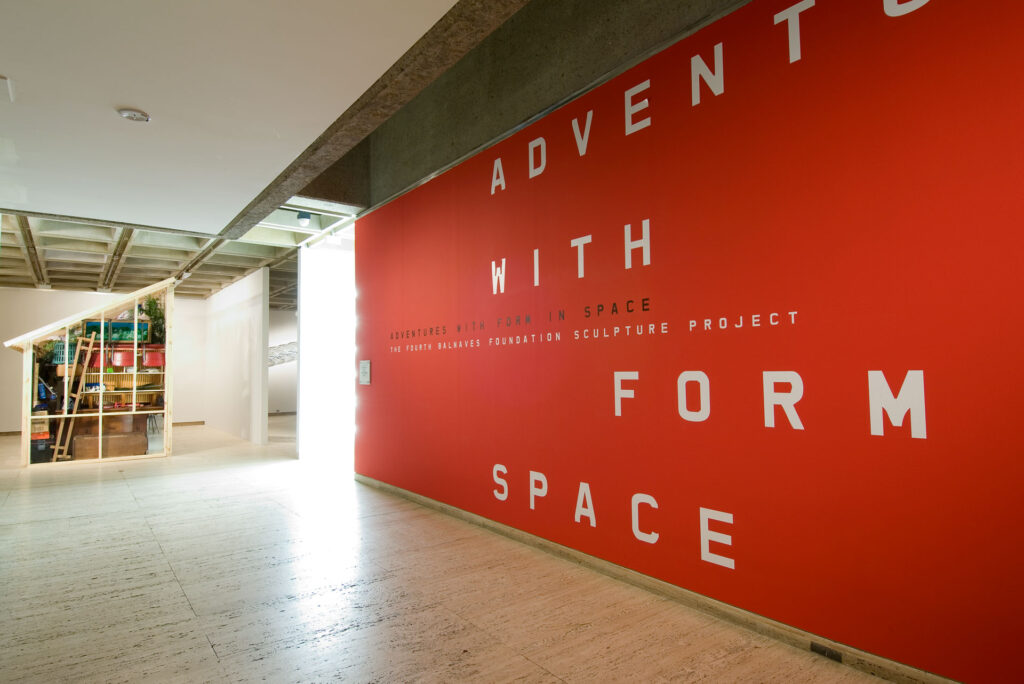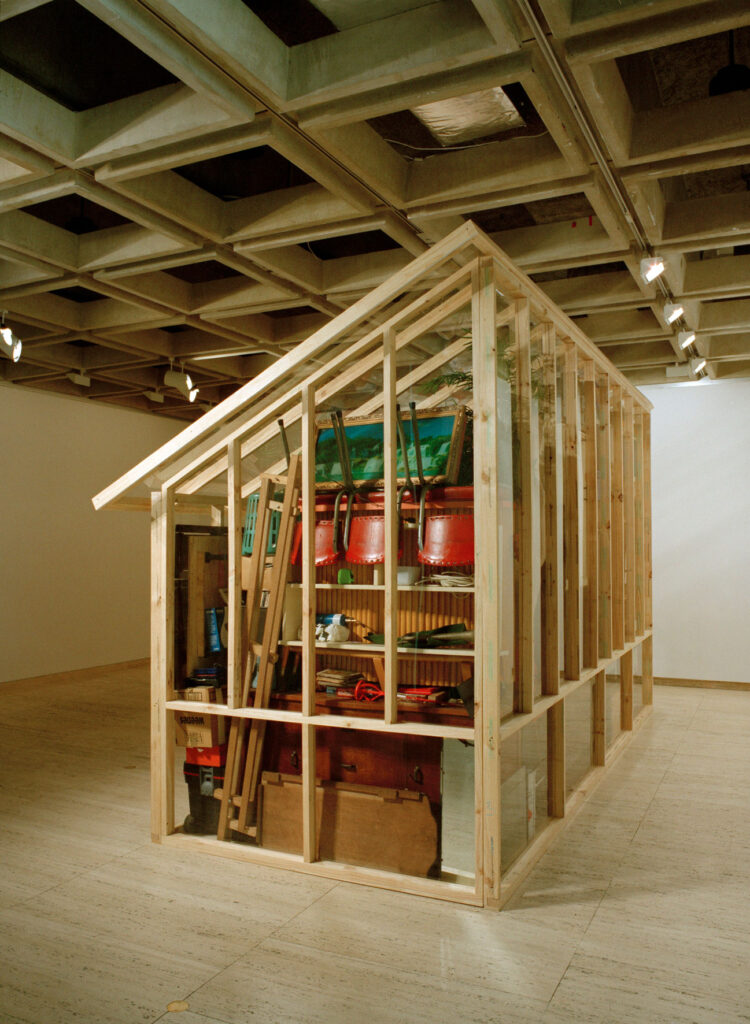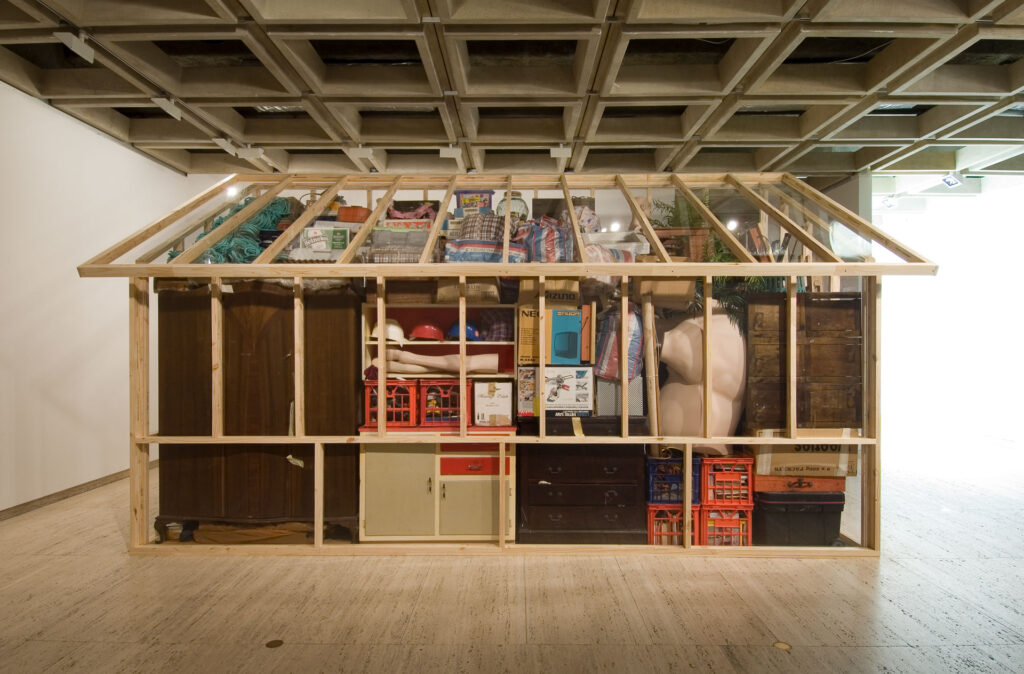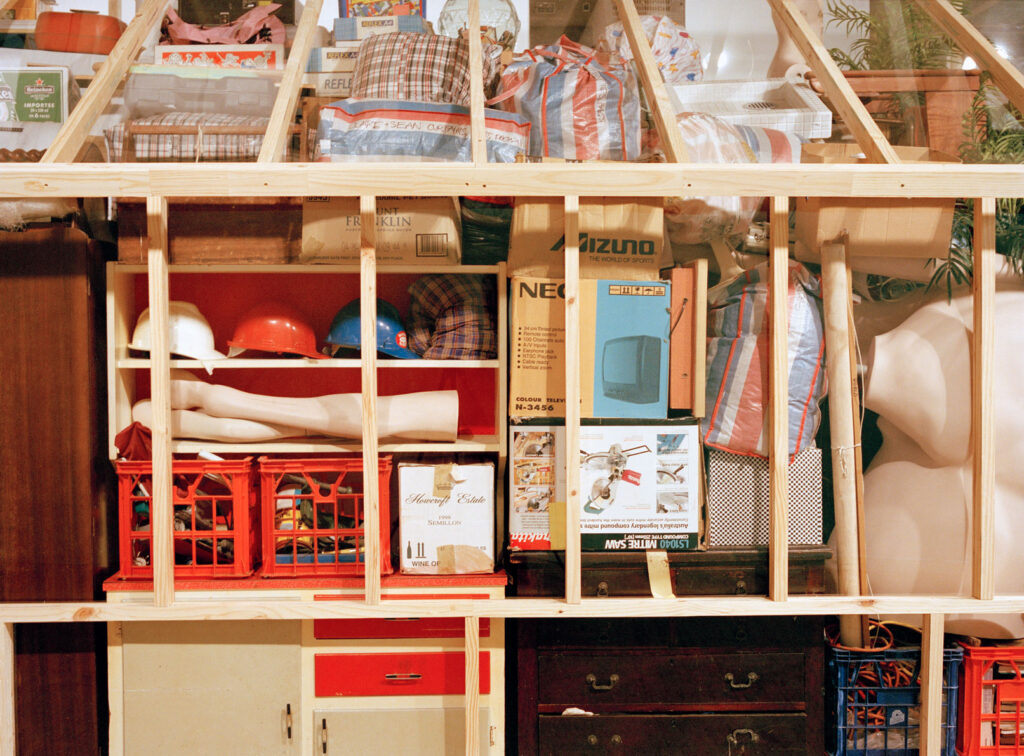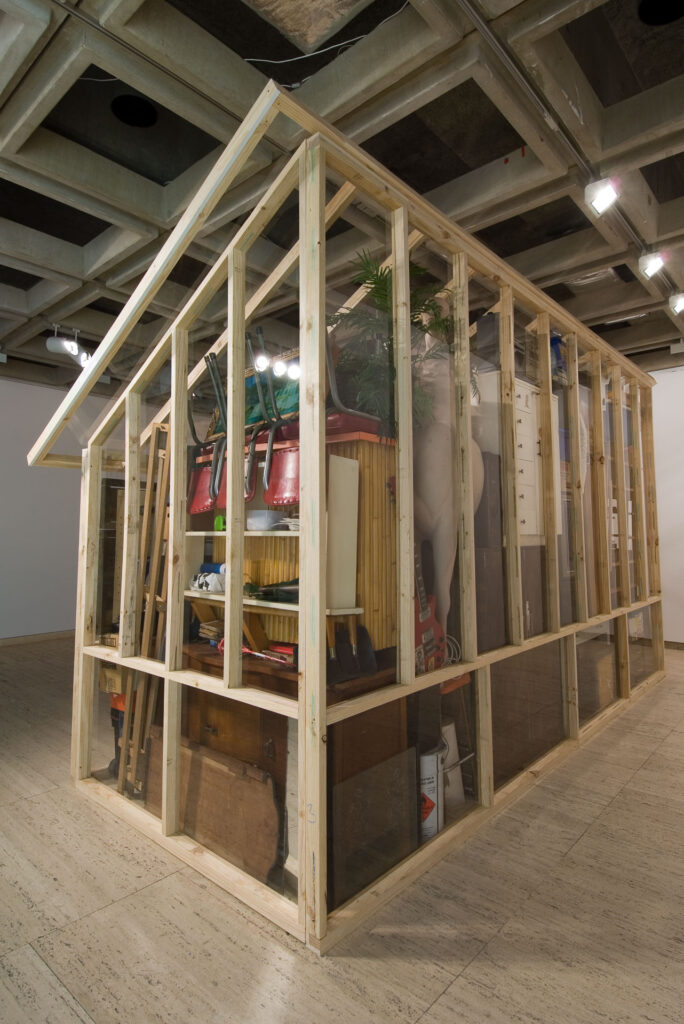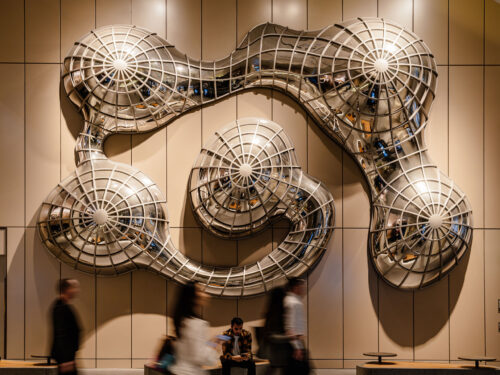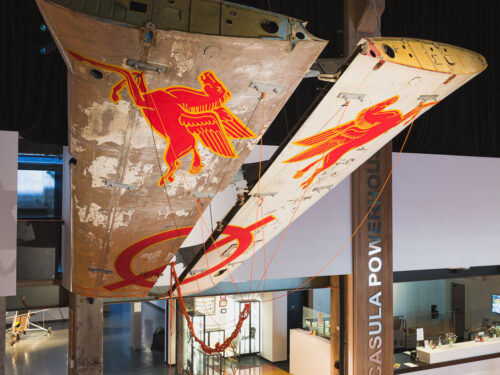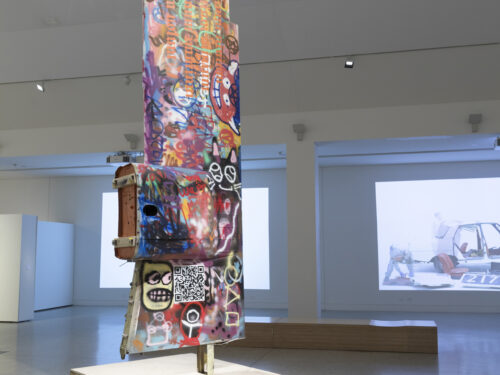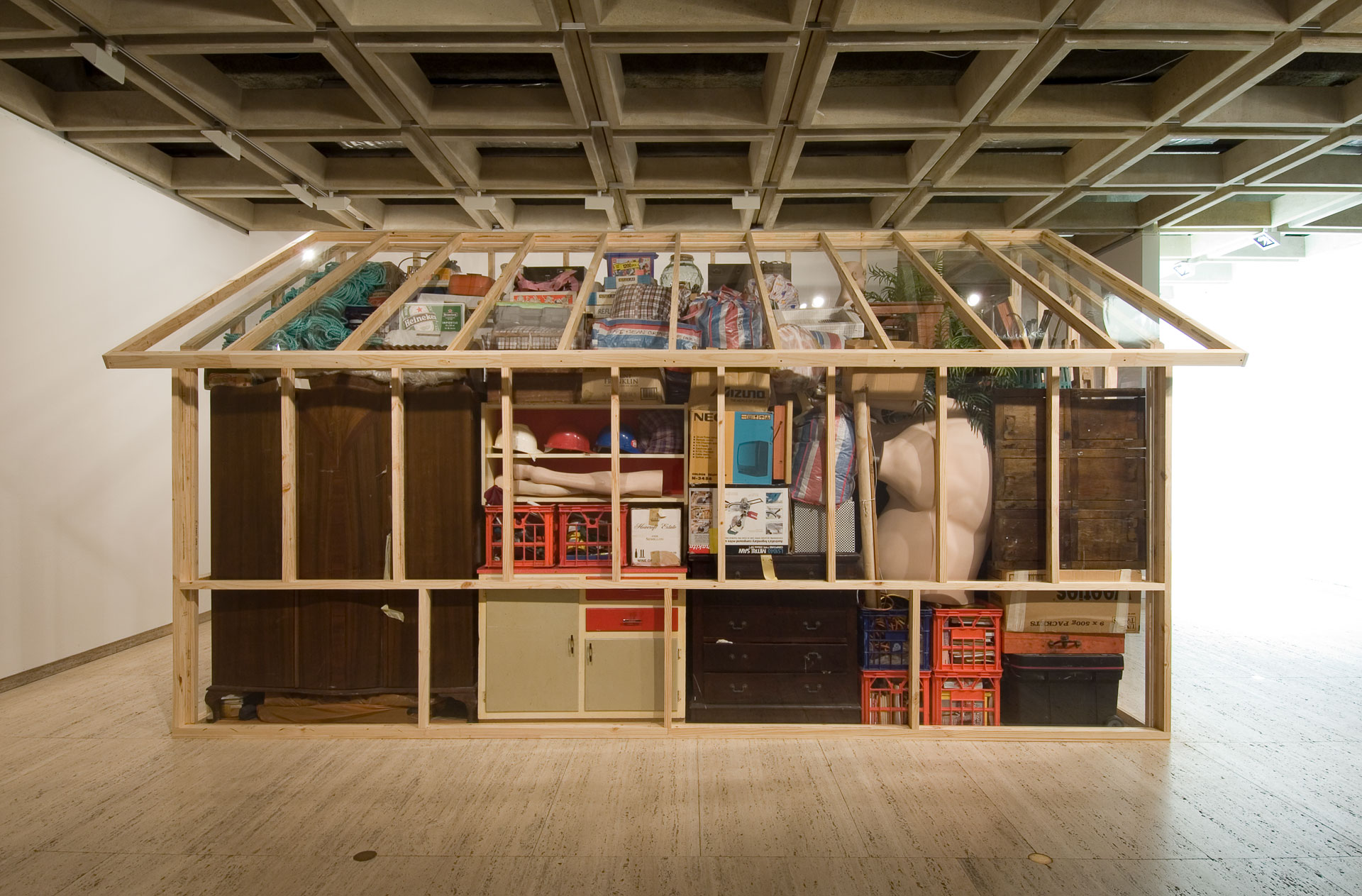
Self Storage
If you looked into a garage in Germany, you would find a car. In California, you might stumble into the rehearsal studio of a rock band, the headquarter of a software company or the film set for a porno. In Australia or New Zealand you might end up in a garage sale. In suburbia the garage has replaced the attic as the house’s unconscious: it is where those things linger that are not allowed or required to cross the threshold, that wait in storage for someone to revisit them one day.
Claire Healy and Sean Cordeiro occupy a garage in Sydney. When the artists embarked on a professional journey around the world, with no date of return and no permanent place of residency, they shifted all belongings considered worthy of keeping, the props of a settled life, into the garage of Cordeiro’s parents. Many of its contents have sunken into oblivion, but Healy and Cordeiro vividly remember a bright orange bar, a couple of red chairs, a carpet, piles of books, and some older, individual art works – mythological creatures and palm trees in plastic. The artists will move this eclectic assembly out of the garage and into the gallery, and condense and compress it into one of their solid sculptural installations.
Many of Healy and Cordeiro’s works consolidate found objects or disassembled parts of one larger entity into rigid geometrical shapes, spherical or cubic structures demanding attention and space, flat stacks taking up a floor or covering a wall. Their components are integrated and arranged into these dense installations under formal aspects alone. Formal, however, not in an aesthetic sense of, say, shape and colour, but in terms of structural stability and static equilibrium. Following such an approach the artists organise their material into an archival system that ignores all encyclopaedic or epistemological categorisation. The governing laws behind these works are derived from the logic (and logistics) of storage and transport which places entirely unrelated objects next to each other. The connections that link the adjoining elements in many of Healy and Cordeiro’s installations are loose and coincidental: they happen to have been at the same place ( Hoard , 2006, the found contents of the Australian studio at Künstlerhaus Bethanien Berlin, Takadanobaba , 2005, the found contents of an artist residency studio at Takadanobaba, Japan, or Deceased Estate Installation , 2004, the found detritus from an artists’ warehouse in Basel).
In Sydney, the artists will, for the first time, work with their own belongings. Despite the private nature of the objects that are shifted into a public space little will be exposed about the artists themselves. No portrait can be drawn from the personal items of Claire Healy and Sean Cordeiro. (what is the work called?) Self Storage , however, will reveal much of the artists’ nomadic life-style. The stack in the Art Gallery of New South Wales is what they left behind, what wasn’t important (or light) enough to travel with them, but yet too important to be discarded. The Cordeiro garage is Claire and Sean’s hoard of memories, but also their chamber of oblivion and repression.
The stack will be covered by a glass house setting up a demarcation between objects and viewer. Although the glass’s transparency allows for unrestricted visibility and suggests accessibility, it creates an insurmountable material as well as conceptual barrier: only special and awe inspiring objects are removed from dust, touch, humidity and time. The protective glass adds a strong museological facet to Self Storage . Healy and Cordeiro’s house shielding works of art as much as items of necessity is a reflection of the Kunst- und Wunderkammer , this luxurious microcosm of curiosities that knew no boundaries between man’s – nor between art and craft – and nature’s masterpieces, presented and displayed in elaborately crafted cabinets and cases.
The display case is a museum en miniature , and yet – Healy and Cordeiro do not obey to museological conventions and taxonomies. Classification, label, description, typology or context – all these narratives remain untold. Not one single object is highlighted, many may even remain invisible, hidden. There is no inventory or catalogue. Every object is treated with the same (lack of) respect. Under the logic of storage, hierarchies are levelled out and functionality becomes redundant: cupboards are laid down, chairs turned upside down with books and boxes stuffed in-between them; the lecherous faun and the wild centaur domesticated and tame, the palm trees reside in synthetic fossilisation.
Moreover, also the green house is bereft of its original function. Just like most of the items and oddities under its sloping roof, it has been turned from an object of use into an object of art – even though, to further complicate matters, some of them were artworks already before their move into the art gallery. Still, neither the glass house itself nor its varied contents can be referred to as objets trouvés . This work does not owe to the Duchampian gesture, Healy and Cordeiro’s acts of transferral are not investigating or pushing aesthetic categories or denominations. They owe, however, much to the formal stringency and physical creation – the piling, fitting, layering – of post-minimal work. Take, for example, the Stack works by Tony Cragg, that also hover between form and narrative, that introduce a literary element into the purity of minimal sculpture.
Healy and Cordeiro borrow from this approach to add another layer to post-minimalism, that of the contemporary condition. Their installations are shaped by the global economic system of the early 21 st century, within which people, goods, knowledge and information travel, shift and move incessantly. This ever growing mobility requires not only for adequate vehicles – containers, planes, ships, data networks – but also for standards and modes to be designed that lubricate this flux. In flatpack , Healy and Cordeiro’s current installation at Künstlerhaus Bethanien, the stacks have been placed on euro pallets – ready to be shipped to their next destination, their next exhibition, and, one day, into museum storage? In this world of transport and cargo, compression is key, and the works by Healy and Cordeiro are its dense metaphors. Associations as diverse as Freud’s dream theory and data compression methods such as JPEG spring to mind – one model explaining, the other facilitating the transport of images with complex messages. Healy and Cordeiro’s stack are the message, and the artists do not allow for them to be decompressed and de-constructed: they preserve their hermetic presence in space.
Astrid Mania
